I have a little project with OpenCV (python) where one of my steps is to take an x-ray image from the human body and convert it to a binary image where white pixels represent where some bone is present and black means there is no bone there.
Since sometimes "bone parts" can be darker than "non-bone parts" from another region, simple thresholding won't work. I also tried adaptive threshold and I couldn't see much difference.
I came up with a simple algorithm that applies a simple threshold for each row. Here is the code:
def threshhold(image, val):
image = image.copy()
for row_idx in range(image.shape[0]):
max_row = image[row_idx].max()
min_row = image[row_idx].min()
tresh = np.median(image[row_idx]) + (val * (max_row - min_row))
# Or use np.mean instead of np.median
_, tresh = cv2.threshold(image[row_idx], tresh, 255, cv2.THRESH_BINARY)
image[row_idx] = tresh.ravel()
return image
And here is the code that does the same work but column-by-column instead of row-by-row:
def threshhold2(image, val):
image = image.copy()
for row_idx in range(image.shape[1]):
max_row = image[:, row_idx].max()
min_row = image[:, row_idx].min()
tresh = np.median(image[:, row_idx]) + (val * (max_row - min_row))
# Or use np.mean instead of np.median
_, tresh = cv2.threshold(image[:, row_idx], tresh, 255, cv2.THRESH_BINARY)
image[:, row_idx] = tresh.ravel()
return image
This method works pretty well with images like this:
 Not quite well for this one but it is not that bad:
Not quite well for this one but it is not that bad:
 Very terrible:
Very terrible:
 Only the left half looks good
Only the left half looks good

...
As you can see; this algorithm works well only for some images. I will be glad to see more experienced people's ideas.
Images are not for me by the way.
Entire source code:
import os
import cv2
import numpy as np
files_to_see = os.listdir("data_set")
files_to_see.sort()
current_file = 0
print(files_to_see)
def slice(image, size):
out = []
x_count = image.shape[1] // size
y_count = image.shape[0] // size
for y_idx in range(y_count):
for x_idx in range(x_count):
out.append(
(
(y_idx, x_idx),
image[y_idx * size: (y_idx + 1) * size,
x_idx * size: (x_idx + 1) * size]
)
)
return y_count, x_count, out
def normalize(image):
image = image.copy()
min_pix = image.min()
max_pix = image.max()
for y in range(image.shape[0]):
for x in range(image.shape[1]):
val = image[y, x]
val -= min_pix
val *= 255 / (max_pix - min_pix)
image[y, x] = round(val)
# image -= min_pix
# image *= round(255 / (max_pix - min_pix))
return image
def threshhold(image, val, method):
image = image.copy()
for row_idx in range(image.shape[0]):
max_row = image[row_idx].max()
min_row = image[row_idx].min()
# tresh = np.median(image[row_idx]) + (val * (max_row - min_row))
tresh = method(image[row_idx]) + (val * (max_row - min_row))
_, tresh = cv2.threshold(image[row_idx], tresh, 255, cv2.THRESH_BINARY)
image[row_idx] = tresh.ravel()
return image
def threshhold2(image, val, method):
image = image.copy()
for row_idx in range(image.shape[1]):
max_row = image[:, row_idx].max()
min_row = image[:, row_idx].min()
tresh = method(image[:, row_idx]) + (val * (max_row - min_row))
_, tresh = cv2.threshold(image[:, row_idx], tresh, 255, cv2.THRESH_BINARY)
image[:, row_idx] = tresh.ravel()
return image
def recalculate_threshhold(v):
global original_current_image, thresh_current_image, y_c, x_c, slices
method = np.mean
if cv2.getTrackbarPos("method", "xb labeler") == 0:
method = np.median
thresh_current_image = threshhold2(original_current_image, cv2.getTrackbarPos("threshhold_value", "xb labeler") / 1000, method)
y_c, x_c, slices = slice(thresh_current_image, 128)
def thresh_current_image_mouse_event(event, x, y, flags, param):
if event == 1:
print(x // 128, y // 128)
cv2.imshow("slice", slices[(x // 128) + (y // 128) * x_c][1])
cv2.namedWindow("xb labeler")
cv2.createTrackbar("threshhold_value", "xb labeler", 0, 1000, recalculate_threshhold)
cv2.createTrackbar("method", "xb labeler", 0, 1, recalculate_threshhold)
cv2.namedWindow("thresh_current_image")
cv2.setMouseCallback("thresh_current_image", thresh_current_image_mouse_event)
def init():
global original_current_image, thresh_current_image, x_c, y_c, slices, files_to_see, current_file
original_current_image = cv2.imread("data_set/" + files_to_see[current_file], cv2.CV_8UC1)
original_current_image = cv2.resize(original_current_image, (512, 512))
original_current_image = normalize(original_current_image)
original_current_image = cv2.GaussianBlur(original_current_image, (5, 5), 10)
recalculate_threshhold(1)
y_c, x_c, slices = slice(thresh_current_image, 128)
init()
while True:
cv2.imshow("thresh_current_image", thresh_current_image)
cv2.imshow("xb labeler", original_current_image)
k = cv2.waitKey(1)
if k == ord('p'):
cv2.imwrite("ssq.png", thresh_current_image)
current_file += 1
init()
cv2.destroyAllWindows()
EDIT: Added original images:



